Danger is often a person’s last thought when placing a ride request on a ridesharing app. However, asking yourself, “Are Uber rides safe?” is essential to being proactive about your safety when ridesharing. You want to know that the person you’re riding with is responsible and dependable and that your ride won’t end in a car accident or other traumatizing event. The first step to protecting your safety is understanding how to keep safe while using a ridesharing service like Uber or Lyft.
Understanding Rideshare Safety: Uber and Lyft Compared
The two most prominent ridesharing services in California and Nevada are Uber and Lyft. However, just because they’re popular doesn’t mean riders should assume these services are safe. Both Uber and Lyft state that rider safety is important to them. However, their individual approach differs.
There are some similarities between Uber and Lyft’s rider safety measures. Both companies have community guidelines or policies that drivers (and riders) must follow. Uber community guidelines include safe driving practices, showing respect, and avoiding unnecessary physical contact; Lyft has similar guidelines.
Similar safety practices for Uber and Lyft are optional masking, an in-app emergency assistance program in partnership with ADT, annual background checks, keeping riders’ numbers and locations private, live 24-hour incident support, and GPS tracking for unnecessary route deviations. These features have been put in place to ensure the safety of their riders, but that doesn’t necessarily mean that rides will always be safe. While the two companies have much in common in their safety practices, they differ in how they implement them, and each company has unique practices like trauma training for Lyft or Uber’s driving experience requirements.
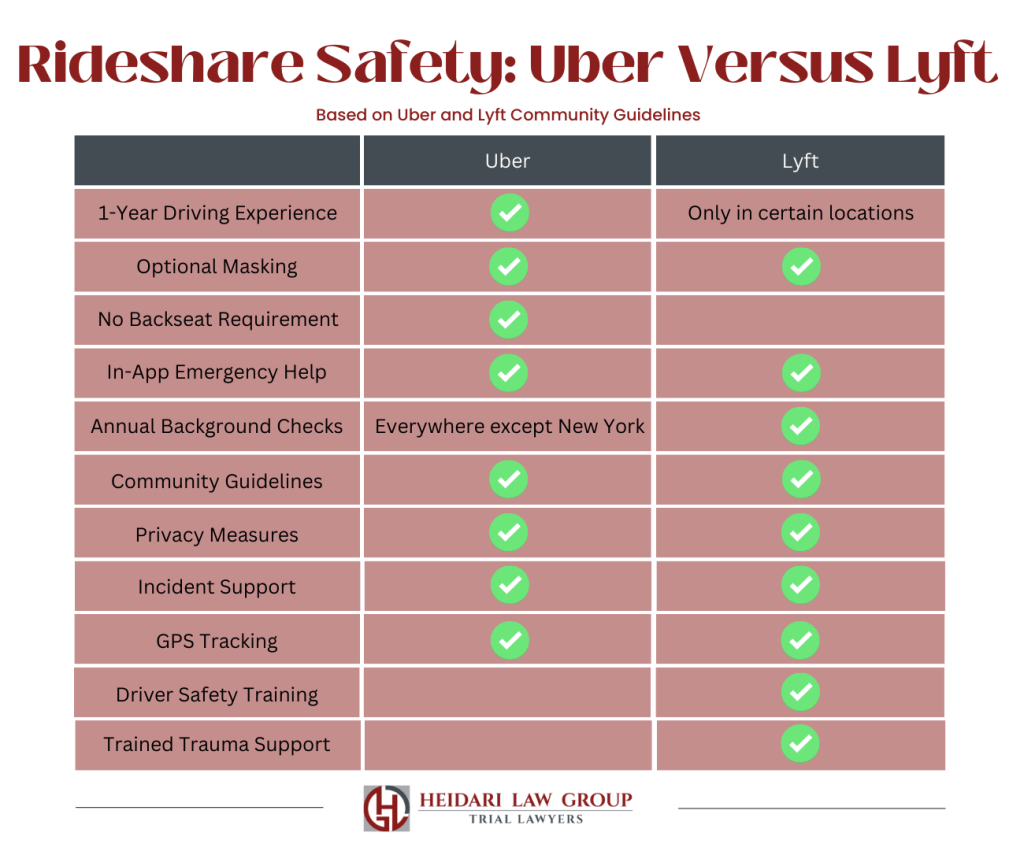
Evaluating Uber’s Safety Measures
Many of Uber’s safety measures are similar to Lyft’s, but some significant differences exist. Both rideshare companies perform initial background checks on their drivers, but in New York City, Uber drivers do not receive annual background checks. Background checks are essential because they help ensure rider safety by ensuring the driver isn’t a person who will engage in unsafe or dangerous behavior.
To keep their riders safe from car crashes, people who drive for Uber must have a minimum of one year of driving experience. In a study by the National Surface Transportation Center for Excellence at Virginia Tech Transportation Institute, researchers found that drivers with less than one year of commercial driving experience were more likely to be involved in a crash than those with more years of experience. Additionally, Uber requires drivers under 25 years old to have at least three years of experience. Most likely due to research from the National Highway Traffic Safety Administration (NHTSA) that younger drivers are more likely to be involved in fatal car crashes.
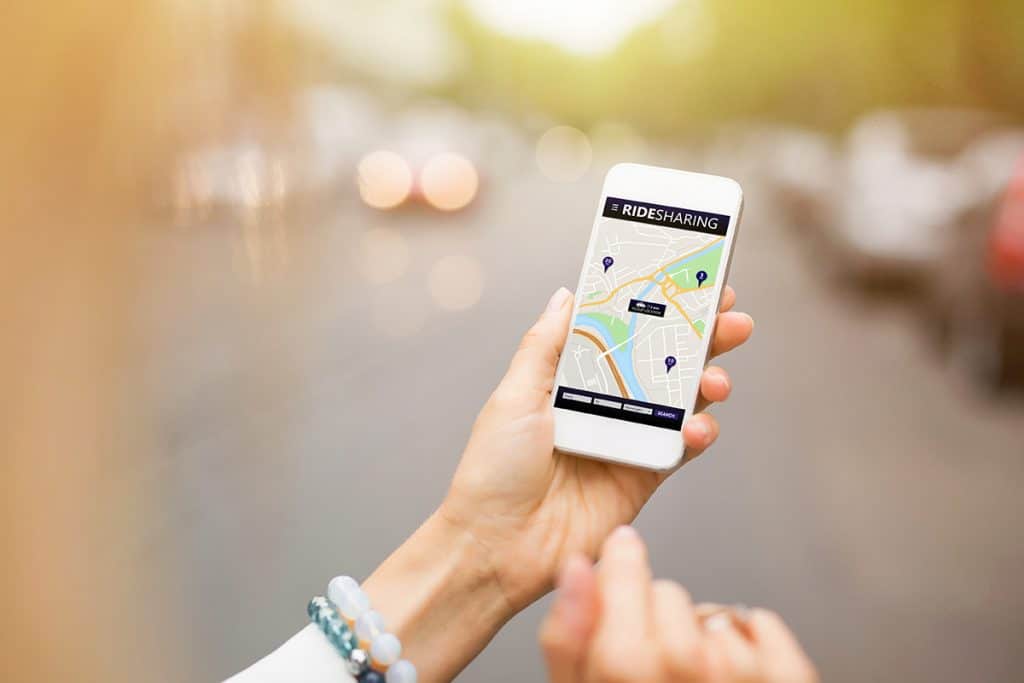
Assessing Lyft’s Safety Protocols
Like Uber, Lyft has safety protocols to ensure rider safety. Some of these are similar, like background checks and, in some locations, experience requirements. They also have unique measures like driver safety training and trauma-informed training for their support staff.
Lyft reports that in the three years between 2017 and 2019, they had over 4,000 reported incidents of sexual assault within their platform. To help reduce incidents of sexual assault, Lyft partnered with RAINN, the United States’ largest anti-sexual violence organization, in 2019. The partnership created mandatory community safety education for drivers and provided its support staff with over 300 hours of trauma support training. Uber, which CNN found to have had over 100 drivers convicted of sexual assault, does not do any of this type of training currently.
Rideshares vs. Taxis: Which Is Safer?
Determining whether a ridesharing app is safer than a taxi can be difficult. While Uber and Lyft have many safety regulations and policies, these are primarily self-imposed by the companies. Depending on the specific location, a government agency may regulate taxi services and often have more stringent regulations for their drivers that can provide better safety for riders.
In Los Angeles, for example, the Los Angeles Department of Transportation has many regulations to provide enhanced safety to taxi riders. Some regulations by the LADOT include in-car security cameras with a minimum of 100 hours of recording time, a publicly viewable driver permit, mandatory safe driver training, FBI background checks, and testing for the medical fitness of their drivers. There are many more requirements by the LADOT. For other locations, check with the local area officiating agency.
Here are some additional regulations and requirements that taxi drivers have in Los Angeles, California:
- Stringent insurance regulations
- Minimum vehicle safety
- Operational seat-belt functionality
- Annual inspections
- Functional two-way radios within the department
- Regular drug testing for drivers
- Fingerprinting
- A seven-year requirement to be free of offenses like sexual assault
Navigating Incidents: What to Do If You’re Involved in a Rideshare Accident
No matter how safe the driver may be, drivers are sometimes involved in car accidents. While a car crash may be traumatic, there are steps you should take after the incident to keep yourself protected.
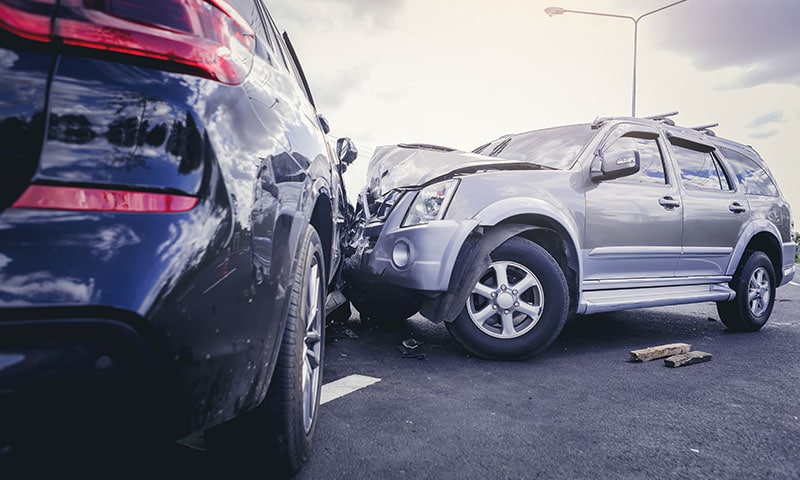
Immediate Steps After a Rideshare Accident
You should follow these critical steps if you are in a car accident while riding an Uber, Lyft, or another rideshare service. First, make sure that you and your other passengers are safe and assess for injuries. If anyone is injured or unresponsive, call emergency services or 911 immediately.
It may be tempting to leave the accident scene, especially if it seems no one is hurt; however, it is vital to stay at the scene to make sure the authorities can document the situation. Moving from the scene can make it difficult for emergency services to gather proper documentation.
You should take two additional steps immediately following the incident: collect information and notify the rideshare company. Take photos of the scene before anyone moves a vehicle. Get pictures of the car and the area where the accident occurred. You should also gather the names, contact information, and insurance details of everyone involved, even if you weren’t driving. After collecting the necessary information, notify the rideshare company about the accident through the app or website.
Seeking Medical Attention
After the incident, it may be tempting to avoid seeking medical attention, but some medical problems connected to car accidents are not immediately apparent. Often, pain, which may seem mild at the time of the incident, can develop into chronic or severe issues later. Even if you don’t feel hurt, you should have a medical professional check you out to be sure.
If injured, including psychologically, following the accident, keep detailed documentation of any related medical visits, diagnoses, and treatments. If you were physically injured, take photos of any visible damage. This information is critical to getting adequately compensated by the insurance company or when filing a personal injury lawsuit.
Legal Considerations and Insurance Claims
After the accident, familiarize yourself with the coverage provided by the rideshare company and any other insurance companies responsible for covering the claims. Some drivers will have two coverage options because, in addition to the insurance provided by Uber, Lyft, or another rideshare company, they have also purchased personal rideshare auto insurance.
No matter how much you’ve suffered, contacting a personal injury attorney is always a good idea. An experienced attorney can help you navigate the often confusing and complicated rideshare claims process and ensure that your rights are protected.

Filing a Report and Claim with the Rideshare Company
You should always report the incident to the company if you’ve been involved in a car accident while riding an Uber or Lyft. Uber has a few ways to report an accident on the app or website. Lyft prefers accident reports on a form.
No matter which company you’re reporting with, you’ll need the following information:
- Date of the accident
- Location of the accident
- Who was injured
- Who was hospitalized or took an ambulance
- Any damages that occurred
- The police report
- Photos of the accident
- Any additional details you wish to share
Special Considerations for Different Passenger Groups
Members of specific communities may experience different problems when ridesharing. However, there are steps that they can take to ensure their safety. Additionally, due to increased scrutiny and complaints from individuals in these communities, rideshare companies have begun to take stronger actions to guarantee the safety of their riders of all groups.
Safety Measures for Women Passengers
Many ridesharing services have had problems with women passengers dealing with unwanted advances and other forms of harassment. To combat this problem, Lyft has enacted a feature where women and nonbinary riders can match with women and nonbinary drivers. Uber has safety guidelines for women but no in-app women-specific features in the United States.
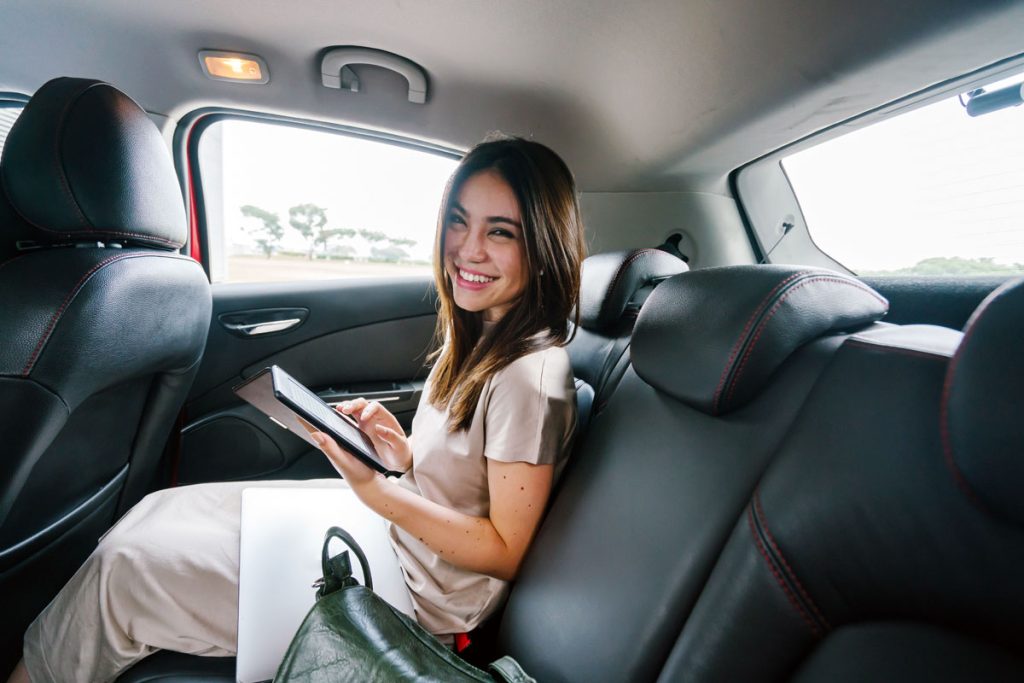
Rideshare Safety for Minority Passengers
No rider wants to feel discriminated against, and rideshare companies are trying to do their part to reduce racism and discrimination by creating clear community guidelines against such behavior. Some additional practices that rideshare providers can do to provide a more respectful and safe environment to racial and ethnic minorities is to disincentivize ride declines based on location and remove rider photos from being seen by drivers.
LGBTQ+ Populations and Rideshare Use
In the wake of several bigotry claims by rideshare users, companies have taken action to ensure the safety of their riders, who are members of the LGBTQ+ community. It has even sparked the creation of a new rideshare company called LGBTQ+ Ride, dedicated to making members of marginalized communities feel more welcome while using ridesharing services.
To combat homophobia and bigotry, rideshare companies have introduced LGBTQ+ features. Some features are decorative, like Uber’s Pride Month backgrounds, but some make action possible when someone using the app acts hatefully. Both Uber and Lyft have added features that provide consequences for people engaging in bigotry, and they’ve also updated their community guidelines to be more stringent against hate speech and discriminatory actions.

Responding to Safety Concerns
Rideshare companies are responding to the problems identified by riders of historically marginalized groups. Uber has in-app functions for reporting racism and other discriminatory behavior. Lyft has strengthened its guidelines to make discriminatory behavior and language, like homophobia or ableism, worthy of immediate account deactivation.
For individuals who experience discrimination during a ride, they should:
- Report the behavior to the company
- Call emergency services or 911 if they feel they are in danger
- Consult with an experienced attorney to see if the company violated any rights
Practical Rideshare Safety Tips for All Passengers
No matter who you are, practicing safety while ridesharing is essential. Luckily, many services offer in-app features, like location sharing and immediate contact with emergency support staff to ensure safety.
Some steps to take before a rideshare trip are:
- Learn how to access and use in-app safety features
- Read app-specific community guidelines
- Always verify the driver’s name and license plate number before getting in
- Let someone know where you’re going and when to expect you
Some steps to take to ensure safety during your ridesharing trip:
- Share location data using the app or a smartphone’s native capabilities
- Pay attention while riding
- Have the emergency support feature ready to go
Steps to take to be safe after a rideshare trip are:
- Always rate the driver honestly
- Inform your trusted person that you’ve arrived safely at your location
Navigating Incidents: What to Do If You’re Injured or Harassed
If a rideshare accident left you injured, make sure that you follow the steps below to ensure coverage for any claims resulting from the incident.
- Call emergency services or 911 immediately following the accident
- Document the accident with photos
- Collect information from everyone involved, including their driver’s license, phone numbers, and insurance information.
- Notify and report the incident to the rideshare company
- Seek immediate medical and legal assistance
Experiencing harassment during a rideshare trip can cause just as much distress as a car crash would. Bigotry, unwanted advances, and other discriminatory actions are not only a violation of most rideshare companies’ policies but might be a violation of your legal rights.
When experiencing harassment while ridesharing, you should first report the incident within the ridesharing platform, either on the website or in the app. The next step would be to consult with an attorney to see what rights violations occurred and to help you file any claims related to the incident.
Another step you may want to take is to seek help from a medical professional. Like injuries from a car crash, harassment can leave long-lasting injuries, like PTSD. A medical professional can best help determine the extent of your damage.
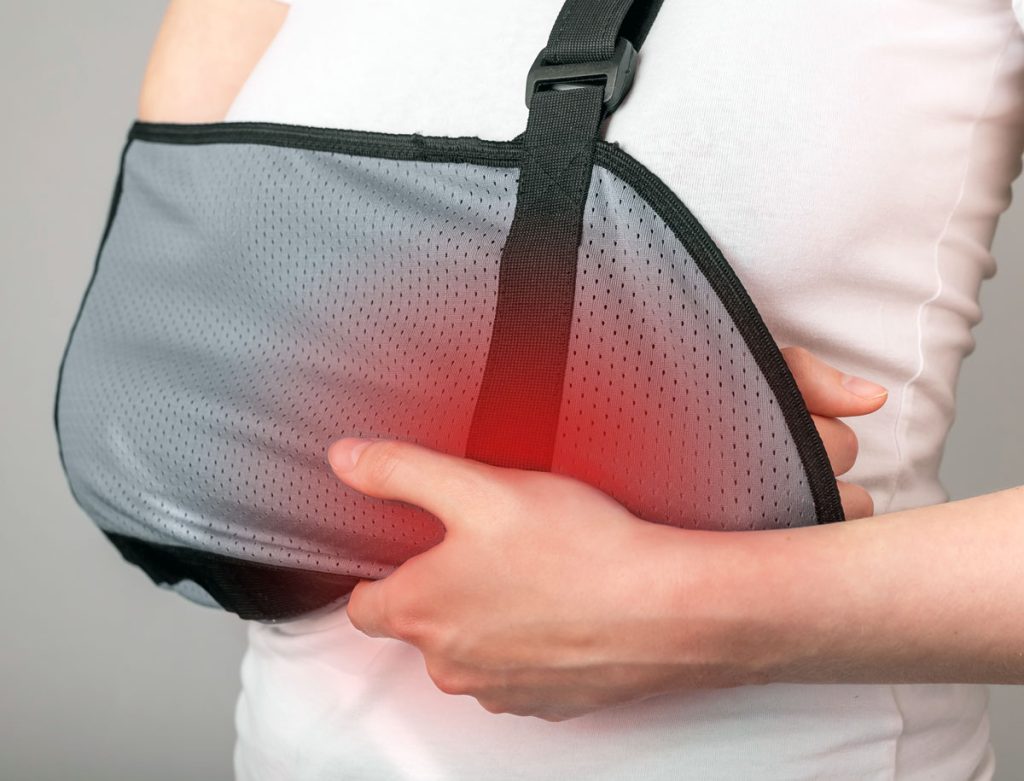
Exploring Alternatives and Protecting Your Privacy
There are many alternatives to Uber and Lyft. Many services are only available in select cities, but the ones listed below are available in California and other major states. Five such rideshare alternatives are:
Some rideshare companies receive scrutiny for failing to prioritize their customers’ privacy. Most major rideshare companies state on their websites that Drivers have no in-app method to store their riders’ pickup or drop-off addresses or any other personal information. It is, however, good to review the privacy policies of your preferred rideshare app to ensure that you agree with how they protect and use your data.
FAQs on Rideshare Safety
Can You Request a Female Driver With Uber or Lyft?
While Uber and Lyft currently do not offer an option to request drivers based on gender, both companies have safety features and policies to ensure a safe environment for all passengers, including women.
Are Rideshare Apps Safe for LGBTQ+ Individuals?
Rideshare companies like Uber and Lyft have policies against discrimination and strive to create inclusive environments for passengers of all orientations and identities. They offer reporting features for any incidents of harassment or discrimination.
How Do Rideshare Companies Screen Their Drivers?
Both Uber and Lyft conduct background checks on drivers, which include criminal history and driving record reviews. These checks are designed to ensure the safety and security of passengers.
What Should You Do If You’re Harassed During a Rideshare Trip?
If you experience harassment, report the incident through the rideshare app immediately after the trip. Both Uber and Lyft take these reports seriously and can take action against the driver, including removal from the service.
Are Rideshares Safer Than Taxis?
Safety can vary by location and individual experiences. However, rideshares often offer additional safety features through their apps, such as ride tracking and sharing trip details with friends or family, which are not always available in traditional taxis.
What Happens If You’re Involved in an Accident While Using a Rideshare?
Immediately check for injuries and call emergency services if needed. Report the accident to the rideshare company through their app or customer service. Consider seeking medical attention even if no injuries are apparent at the time.
Can Rideshare Drivers See Your Personal Information?
Rideshare drivers have access to limited information about passengers, such as their names and pickup/dropoff locations. Personal contact information is not shared directly; communication can be done through the app to protect privacy.
What Alternatives Are There to Uber and Lyft?
Several alternative rideshare and transportation services include local taxi companies, limousine services, and app-based services like Via, which may offer different features or pricing structures.
How Can You Improve Your Safety While Using Rideshare Services?
Use in-app safety features, share trip details with friends or family, verify the driver and car details before entering the vehicle, and stay alert to your surroundings throughout the trip.
Should You Sit in the Front or Back Seat During a Rideshare?
Sitting in the back seat is generally recommended for personal safety and social distancing. This allows you more space and makes exiting the vehicle in an emergency easier.
***Disclaimer: This webpage has been crafted by Heidari Law Group solely for educational purposes. The content of this article aims to offer a broad comprehension of the law and does not constitute specific legal advice. By accessing this site and perusing its contents, no attorney-client relationship is established between you and any member of Heidari Law. Additionally, it’s important to note that the legal landscape is subject to continuous change, rendering some of the information provided herein potentially outdated or no longer applicable.



